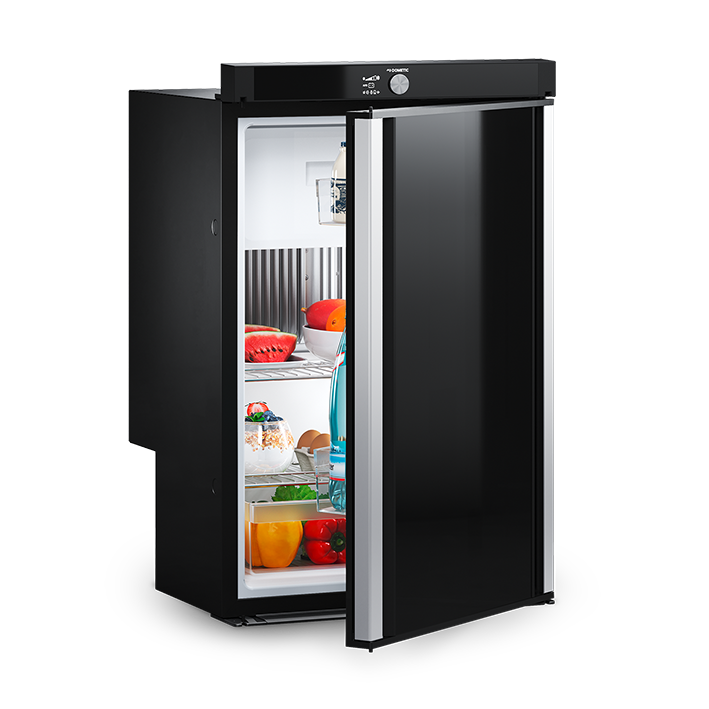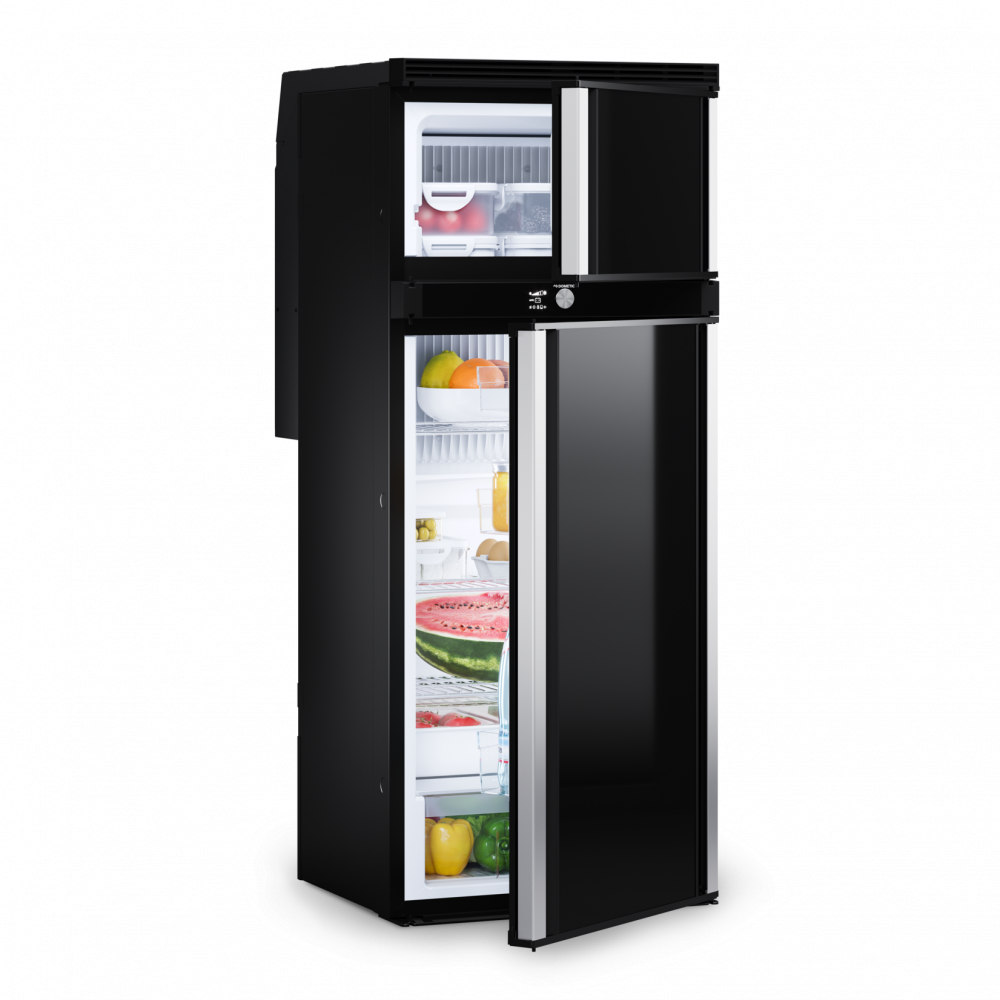Refrigerators
Absorption refrigerator or compressor refrigerator? That is the question ...
Do you like cooking with gas in your caravan or motorhome? Then you can use a gas-operated absorption refrigerator and do not need a separate power connection. If you don’t have any gas on board, you should choose a compressor refrigerator, instead.
Dometic absorption refrigerator
It doesn’t matter if you have a motorhome or a caravan because these refrigerators are gas-powered. They do not need electricity to work. If you are on the road a lot, a Dometic absorption refrigerator ensures that you can stay independent. And what’s even better is that most of the available models are “hybrid devices” – meaning that they can be operated with gas and electricity. For example, with 12 V or 230 V. Many devices automatically switch to electricity when they are connected to the power grid on the campsite.
Tip
Look for AES = Automatic Energy Selection.
Enjoy a quiet sleep – with a super-silent camping refrigerator
Another great advantage of absorption refrigerators is that they make hardly any noise. This works best when your motorhome is level.
Tip
For all campers who are on the road a lot: Make sure you have enough gas in your motorhome so that you can always enjoy cool drinks and hot meals.
Dometic compressor refrigerator
If you don’t have gas on board, usually stay at campsites with electricity or like to holiday in very hot regions, you should consider a Dometic compressor refrigerator. They can keep your drinks and treats refreshingly cold even in hot temperatures. Unlike absorption technology, compressor technology runs on electricity. That means it is powered by your RV battery or the power connection outside. These refrigerators are more efficient and usually cheaper. Another advantage: you do not have to plan for ventilation slots.
What sizes are there?
For a long time, 90 l refrigerators were the measure of all things camping. By now, though, Dometic refrigerators are also available with a capacity of up to 175 l – often as fridge-freezers. Decide for yourself how much space you want your refrigerator to have for fresh ingredients, cold drinks or ice cubes. Also consider where you are going to put the refrigerator. Small ones usually work well as an under-counter appliance in the kitchen unit. But for larger models, there should be enough space next to or opposite the kitchen.
Tip
With an icebox or a fridge-freezer, you always have fresh ice cubes on hand. That way, you can chill your drinks in seconds. A practical side effect: You no longer have to keep large bottles in the fridge – and there is plenty of space for fresh fruit, vegetables or milk for your coffee. A cool tip for the hot season, especially for large families.
What shapes and models are available?
Change the door hinge of the fridge, choose a particularly slim model or go for one that can be installed right above the wheel case cover. In the last few years, Dometic has come up with a lot of ideas to make camping even more enjoyable – with intelligent model variants.
Technical terms simply explained
- What is a 3-way fridge?
An absorption refrigerator can be operated with electricity and gas. If your refrigerator is equipped with AES (Automatic Energy Selection), it switches automatically. While driving, you cool with 12 V. When parked, your unit is powered by gas. If you have access to a power connection at your campsite or parking space, you can also operate your refrigerator with 230 V when it is parked. - What is an absorption refrigerator?
Absorption technology uses an ammonia-water solution as a refrigerant. In the boiler, this solution is heated by a gas flame or an electric heating cartridge (12 V/230 V), whereby the ammonia is extracted and rises in the form of gas bubbles. The rising ammonia bubbles create a pump effect and end up in the condenser, where the ammonia vapour condenses. The resulting liquid flows into the evaporator in the refrigerator compartment and immediately becomes gaseous again. Heat is extracted from the interior of the refrigerator. The ammonia gas is fed back into the storage tank and absorbed by the weakly concentrated water-ammonia solution in the absorber. Then the cycle starts again. - What is a compressor refrigerator?
Compressor technology uses a gaseous refrigerant. This gas is compressed by a compressor and thus heated. There are cooling fins (condensers) on the back of the refrigerator that release the generated heat into the ambient air – the refrigerant liquefies. This liquid then flows to the evaporator in the refrigerator compartment, where it becomes gaseous again due to pressure reduction. This process removes heat from the inside of the refrigerator and your drinks stay cold. The gas then flows back to the compressor and the cycle starts again.




































